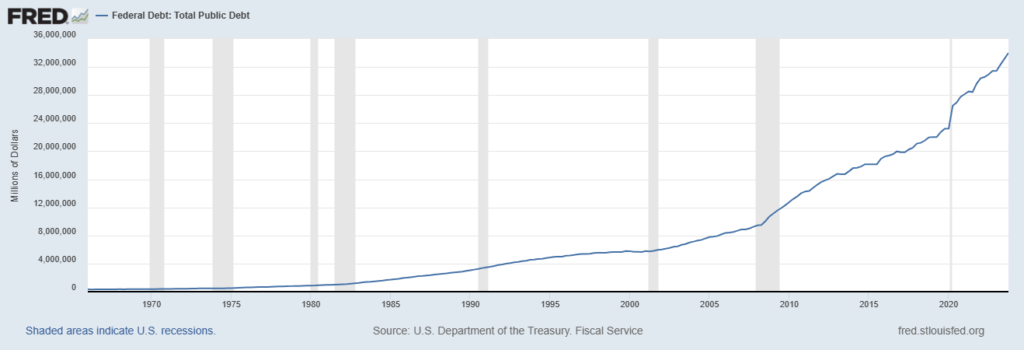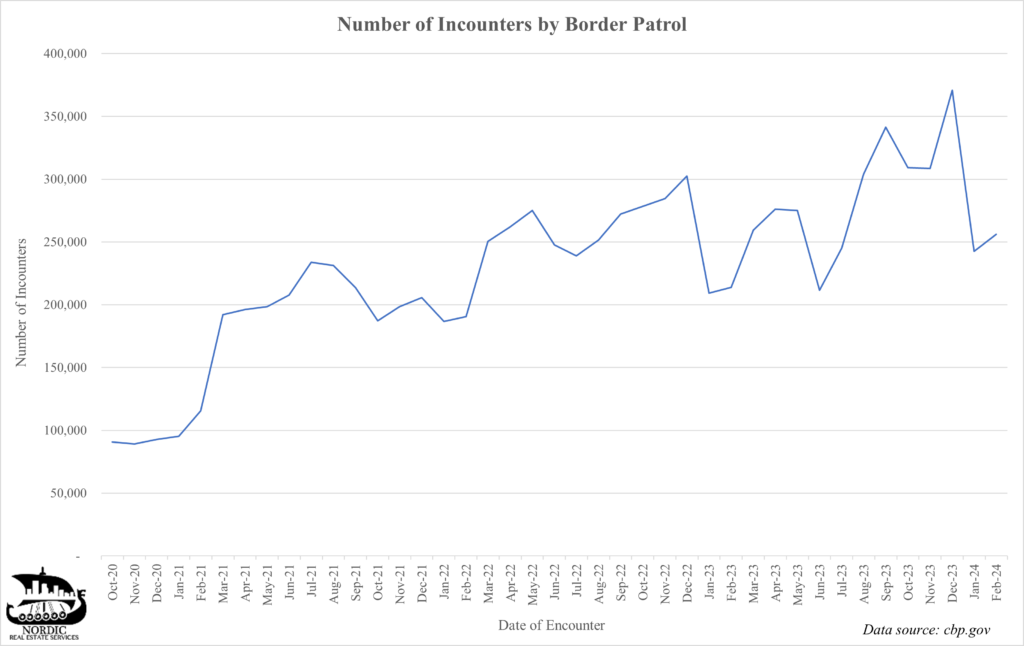Introduction
Welcome, fellow real estate enthusiasts, to another insightful journey into the world of property investment. Today, we’re delving into a topic that’s often overlooked but holds profound implications for the real estate market: the government’s hidden agenda behind economic manipulation through immigration. It is important to emphasize that legal immigration is extremely beneficial for America as a whole, so long as the flow of migrants is at a healthy level and we ensure that only individuals who will add value to our country are welcomed. Unfortunately, in our current situation, the government has been compelled to resort to illegal immigration in order to achieve their goals.
Understanding Economic Manipulation Through Immigration
Before we delve deeper, let’s grasp the concept of economic manipulation. Simply put, it’s the deliberate intervention in the economy by authorities to achieve specific goals, such as boosting growth, controlling inflation, or influencing market trends. Surprisingly, immigration policies play a significant role in this manipulation. However, instead of utilizing legal avenues, authorities are currently resorting to blindly allowing mass swaths of illegal immigration to influence the market rapidly in order to achieve their end goal.
The Government's Hidden Agenda
I’m sure at this point you’re wondering what their end goal is. Many believe it’s to influence votes, while others think it’s to assist those in need. The truth is, both of these answers may hold some validity as they are major topics of discussion. Unfortunately, the most impactful reason is often overlooked entirely. The simple answer is to save the American governments debt crisis at the expense of the dollar’s value. Before we can fully grasp the severity of what’s occurring, we need to delve deeper into our economy as a whole and understand what’s currently happening to see how everything ties together and its potential impact on the economy. Understanding this will provide you with a competitive advantage over others, enabling you to make informed investment decisions.
Federal Reserve and inflation
As I’m sure you all know, inflation has been a hot topic for quite some time now, as we continue to feel its effects. Provided below is a graph representing the overall CPI index, illustrating the inflationary impact of loose fiscal and monetary policies ever since the end of the dollar’s tie to the gold standard back in 1971 by Richard Nixon. From that point on, our dollar became no more valuable than monopoly money. With currency no longer backed by a physical asset like gold, the government was free to print and borrow an infinite amount of money as they saw fit. This has inadvertently led to $34.5 trillion of national debt and rampant devaluation of the American dollar.

Government Debt

Source: FRED: Total Public Debt
As depicted above, shortly after 1971, United States Government debt began to grow at what appears to be an exponential rate. This outcome is unsurprising, as the moment the Federal Reserve no longer had to balance their books based on the amount of gold they had in reserves, they essentially had no guide rails in place to limit their ability to purchase U.S. Treasuries and bank bonds. U.S. Treasuries are the government’s primary source of funding projects through debt. Prior to 1971, there was a level of limitation on the Federal Reserve’s ability to purchase government Treasuries. However, post-1971, the U.S. government had an entity that could fund their projects with the promise to pay back later. This is a simplified description of what is really happening, but it’s not the key focus of this discussion.
Illegal immigration

Source: CBP.GOV: Nationwide Encounters

Behold, a revealing graph showcasing the monthly number of illegal immigrants encountering border patrol agents. Unfortunately, pinpointing the actual number of illegal immigrants currently in our country is impossible as they are here unlawfully. Some estimates suggest there are anywhere between 3 to 10 million illegal immigrants residing in America. Since we cannot obtain a definitive number, let’s assume that an additional 50% of the total nationwide encounters slipped by and entered the country illegally. This implies that over the span of the three years and five months of available data, more than 4.7 million individuals entered the country illegally and currently reside here. This number exceeds 8 times the population of Wyoming. Not to mention, this figure does not account for those who entered before the available data.
How This all Ties Together
Now that all the groundwork has been laid, let’s discuss how this all works together. The United States Government currently stands as a global superpower and upholds the standard of being the world’s reserve currency. If America were to lose this status, the American dollar would collapse, sending America into a death spiral unlike any seen before. This, of course, is not in the best interest of not only the typical American citizen but also every company on American soil.
Unfortunately, the Government has chosen to swallow a cyanide pill and is doing everything in their power to focus on saving the government systems over saving the dollar. Meanwhile, the Federal Reserve has taken the opposite path to save the dollar by increasing borrowing costs and reducing the amount of government-backed securities they own. This has forced the government to seek alternative paths to manipulate the economy to maintain the status quo.
As the government has accumulated astronomical amounts of debt, which now costs substantially more to borrow due to rising rates set by the Federal Reserve, it is in their best interest to synthetically push for higher inflation. Higher inflation decreases the value of the dollars they borrowed in the past, making it cheaper for them to pay back in the future.
Now, the question arises: what is the fastest way to cause inflation outside of pumping more money into circulation? The easiest way is by drastically increasing demand for goods and services. The quickest method to achieve this is by opening the doors and flooding the American economy with illegal immigrants. The process of allowing legal immigration takes nearly a year for an individual to complete. The slow process of increasing legal immigration would not achieve their overarching goal, so they have chosen to take a more radical approach and decided to open the borders and let massive swaths of people into the country.
This quick and radical influx of people increases the demand for housing, pushing up the costs for both renting and owning. The demand for food and medical needs also rises, squeezing supply and further increasing costs. In order for people to afford housing and food, they need jobs. This surge in demand for work pushes the cost of employment down, forcing higher-paying employees out and increasing unemployment. Unemployment is one of the key metrics that the Federal Reserve uses in making decisions on increasing or decreasing interest rates, thus speeding up the time in which the Federal Reserve will react and ultimately forcing them to lower interest rates.
Ultimately, the government’s goal is to maintain high demand in the market to keep prices high, devalue the dollar, and decrease the effective cost of borrowing. Additionally, they are synthetically influencing unemployment to force the Federal Reserve’s hand to drop interest rates so they can borrow at a lower rate.
Implications for Real Estate Investors
As real estate investors, it’s imperative to grasp the implications of government-driven immigration policies. Market volatility, investment opportunities, regulatory changes, and political uncertainty all stem from these policies. By deciphering these implications, investors can craft resilient strategies to thrive in ever-evolving market conditions.
One significant impact of immigration policies on the real estate market is the persisting demand for housing, especially as illegal immigration continues. According to estimates from the National Association of Realtors, America currently faces a shortage of 5.5 to 6.8 million homes. To put this into perspective, if we consider the 4.7 million illegal immigrants mentioned earlier and assume an average household size of two people, we could potentially reduce this housing shortage to 3.15 to 4.45 million homes. However, it’s important to note that this calculation does not account for all illegal immigrants who entered prior to the available data mentioned earlier. It is important to note that the number of actual illegals may be more or less than estimated.
Understanding the relationship between immigration policies and housing demand is crucial for real estate investors. This demand not only affects the residential market but also has ripple effects across commercial and rental sectors. As such, investors must adapt their strategies to accommodate these dynamics, seizing opportunities and mitigating risks in an ever-changing landscape.
Challenges and Risks
Yet, with opportunity comes risk. Regulatory changes and political upheavals pose significant challenges to real estate investors navigating the murky waters of immigration-driven economic manipulation. It’s crucial to stay vigilant, adapt quickly, and mitigate risks proactively to safeguard investments.
One area of concern is understanding local laws regarding squatter’s rights, renting to illegal immigrants, and the ability to enforce laws on individuals who are not American citizens. These legal nuances can have profound implications for property owners and investors, affecting their rights, liabilities, and potential recourse in various scenarios.
Moreover, it’s essential to monitor government actions and policies related to illegal immigration. Understanding the direction of enforcement efforts and potential shifts in immigration laws can help investors anticipate changes in demand, property values, and rental markets. Additionally, consider the broader economic impacts stemming from illegal immigration, beyond mere political rhetoric.
By staying informed and proactive, investors can better navigate the complexities of immigration-related risks and opportunities in the real estate market. This proactive approach enables them to adapt their strategies effectively, protect their investments, and capitalize on emerging trends in an ever-changing landscape.
Conclusion
In conclusion, the intersection of immigration policies and real estate investment is a complex and dynamic landscape. From the implications of government-driven economic manipulation to the challenges posed by regulatory changes and political uncertainties, real estate investors must navigate a myriad of factors to succeed in this arena.
Throughout this discussion, we’ve explored the profound impacts of immigration on housing demand, market volatility, and investment opportunities. We’ve delved into the implications of illegal immigration, shedding light on its effects on housing shortages and market dynamics.
Moreover, we’ve highlighted the importance of staying vigilant, adapting quickly, and mitigating risks proactively in the face of changing immigration policies and regulations. Understanding local laws, monitoring government actions, and considering broader economic impacts are essential components of a robust investment strategy in this realm.
Ultimately, while immigration-driven economic manipulation presents both opportunities and risks for real estate investors, it’s clear that informed decision-making and proactive measures are key to thriving in this ever-evolving landscape. By remaining vigilant, adaptive, and strategic, investors can navigate the complexities of immigration-related challenges and capitalize on emerging trends to safeguard their investments and achieve long-term success in the real estate market.













